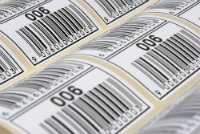
Orlando, FL—RFID may have stolen some of barcoding’s thunder as a operations technology, but Charlie Kantz doesn’t care.
The vice president of logistics/warehousing for Bakers Footwear Group, Kantz firmly believes that implementing a barcode system in 2005 was the single greatest improvement his company has made to its supply chain operations—and during the Tuesday luncheon keynote speech here at the National Conference for Operations and Fulfillment, he shared the numbers to back it up.
A retailer with 240 stores in 37 states as well as an e-commerce site, Bakers has the Chinese factories that manufacture its shoes place barcodes on every box, using a Web-based application developed by Bakers. From there, Kantz and his team can track the progress of the goods, down to the SKU level, through every step of their journey from China to the individual stores. “Instead of our entering everything into the system,” Kantz said, “the system works for us.”
By and large Bakers’ shipments fall into one of three categories. Some are zone-skipped from China direct to Bakers stores; others are received by a third-party logistics provider (3PL) in Los Angeles before being sent to stores; the remainder, including shipments earmarked to fulfill online orders, are sent to the Bakers distribution center in St. Louis.
Whereas traditional zone-skipping and DC bypass operations don’t easily allow for changes to the final destination when the goods are midtransit, Kantz said, the Bakers system does. Because team members at all stages throughout the supply chain, including the consolidated freight shipper (CFS), can access the application, Kantz can, for example, have the CFS reroute a container originally bound for stores to the 3PL, where it can be stripped and relabeled, then sent on to its new destination.
Kantz also uses the flexibility inherent in the system to divert fast-selling SKUs to air transport to store rather than ground transport. “In order to have flexibility,” he said, “you have to have structure.”
The visibility gained by the end-to-end barcode tracking also enabled Bakers to implement an automatic store replenishment system. The software uses each store’s previous four weeks of sales and sales projections for the coming four weeks to determine the quantities and SKUs that need to be sent to each. The system calculates the allocations every Sunday night then generates the tickets for wave-packing in time for the Monday morning shift.
Another benefit of the visibility: The Web fulfillment operation in St. Louis can ensure that enough of the right sizes of shipping cartons are ready prior to each shipment’s arrival. This reduces the amount of dunnage used, Kantz said, while improving the customer experience.
As for those numbers: Among other metrics, since implementing the barcoding system, Bakers has slashed its total freight charges by 20%. It also minimized it use of the 3PL and reduced store-to-store transfers by 45%.
And Kantz continues to optimize the system. “Sometimes I feel like a mad scientist tweaking these things,” he said.